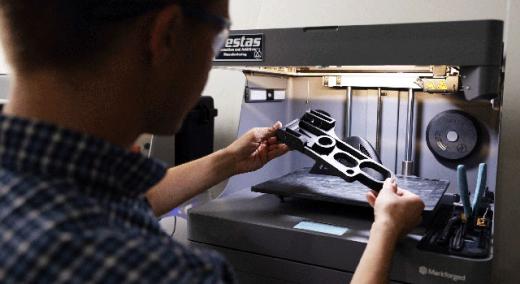Markforged
We’re all familiar with photos of Ford’s production lines in 1920. But would we recognize them today? As part of a broader trend referred to as “Industry 4.0,” systems in many factories have modernized considerably in recent years. This digitization of the manufacturing sector aims to apply emerging technologies—such as cloud computing, smart automation, IoT devices, digital inventories, and data analytics—to use data to help engineers make better decisions, improve factory processes, and ultimately require less human oversight.
|
ADVERTISEMENT |
At the center of the factory’s shift toward digital is additive manufacturing (AM), known colloquially as 3D printing, which enables the core suite of Industry 4.0 technologies to be directly applied to the process of fabrication itself. 3D printers have come a long way from their humble beginnings as rapid prototyping machines and gimmick factories for novelty items. They’ve evolved not just into machines that fabricate high-performance parts for airplanes, but into data collection hubs that gather massive quantities of information about how different parts are built during the fabrication process.
…

Add new comment